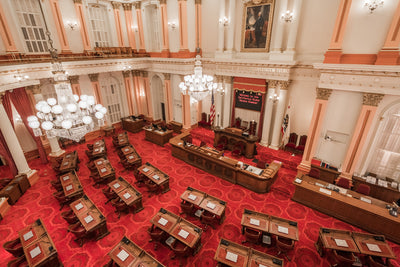Latest PFAS Legislation (Federal and State)
RSS
Analies Dyjak, M.A. | Policy Nerd
PFAS have been detected in tap water across the entire country. In an effort to reallocate funding to address the current pandemic, various mitigation projects have been postponed. While we agree a majority of funding and resources should be allocated to COVID-19, water improvement projects should not be completely ignored. We wanted to highlight recent state and federal legislation regarding PFAS contamination, as well as important mitigation measures that have recently been put on hold.
Newest PFAS Federal Legislation
The PFAS Action Act:
On January 10, 2020, The PFAS Action Act of 2019 passed the U.S. House of Representatives. The bill is now waiting to be voted on by the Senate. This bill would require EPA to set a national standard under the National Primary Drinking Water Standards for both PFOA and PFOS, triggering mandatory compliance by municipalities. Furthermore, the bill would require cities and towns across the country to reduce PFOA and PFOS in drinking water to levels set by EPA. The bill would also authorize $500 million over five years to help municipalities comply with the new PFAS standards.
On January 29th, 2020, Senators Bernie Sanders, Jeff Merkley, and Ed Markey, introduced The Preventing Future American Sickness (PFAS) Act. This bill would require EPA to designate all PFAS chemicals as “hazardous substances” under CERCLA. It would also require federal assistance to individuals with private wells that have been contaminated with PFAS. The PFAS Act does not, however, explicitly ask EPA to set federal drinking water standards for PFAS chemicals.
States Take Action on PFAS Contamination
Alaska: Alaska State Legislature introduced a bill that would require more municipal testing, provide public notices when PFAS (specifically in the form of firefighting foam) is being used, and provide clean water to those who have detected PFAS in their drinking water. Unfortunately, Alaska does not have enough state funding to set their own Maximum Contaminant Levels (MCLs), and therefore must wait for federal PFAS standards.
California: On February 6, 2020, California reduced its Response Levels (RLs) from 70 parts per trillion (combined PFAS) to 10 parts per trillion for PFOA and 40 parts per trillion for PFOS. If municipal concentrations exceed these levels, the public utility must notify residents within 30 days of receiving laboratory results. The California Water Board is also in the midst of completing a PFAS investigation.
Georgia: In April of 2019, Georgia prohibited the use of Class B fire retardants, which includes all PFAS chemicals. There are a few major exemptions included in House Bill 458 that make it extremely flawed. These exemptions include the use of Class B fire fighting foams in response to an emergency fire, as well as for training purposes, if the facility is built to prevent PFAS from being released into the environment.
Minnesota: In April of 2019, Minnesota lowered their health-based advisory level for PFOS from 27 parts per trillion to 15 parts per trillion. If a municipal water system has PFOS levels above 15 parts per trillion, the utility must notify residents.
New Hampshire: In July of 2019, New Hampshire adopted the most stringent standards for PFAS in drinking water in the country. PFOA=12 parts per trillion, PFNA=11 parts per trillion, PFOS=15 parts per trillion, and PFHxS=18 parts per trillion. However, in December, the Merrimack County Superior Court issued an injunction on the PFAS standards, claiming that the New Hampshire Department of Environmental Services did not adequately weigh costs and benefits.
New York: We recently wrote an in-depth article about New York’s response to PFAS contamination which can be found here.
Vermont: On May 16, 2019, Vermont’s Governor signed into law some of the most stringent PFAS standards in the country. Five combined PFAS variations (PFOA, PFOS, PFHxS, PFNA, and PFHpA) must be below 20 parts per trillion in state-wide public water systems.
Our Take:
While state and federal legislatures are still actively trying to make things happen regarding PFAS, several mitigation projects have been postponed. A reallocation of funds in response to COVID-19 is the responsible move. It’s also important to acknowledge that in the meantime, millions of American are still drinking contaminated water. Instead of looking at public health as a holistic entity, we are selectively responding to immediate threats and failing to prevent future exposure.
Other Articles We Think You Might Enjoy:How Did Hydroviv Perform in a Duke University PFAS Removal Study?
5 Drinking Water Contaminants You Should Know About
What Do TDS (ppm) Meters Tell Me About My Drinking Water?


